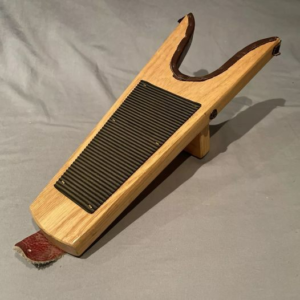The origins of the boot jack date back to the 18th century when boots became a staple in both men’s and women’s fashion. During this era, boots were often tall, tightly laced, and difficult to remove without assistance. Boot jacks emerged as a practical solution, allowing wearers to take off their boots without straining or needing another person’s help.

Boot jacks were particularly popular in Europe and North America, where they were considered essential household items. Craftsmen crafted boot jacks from wood, metal, or a combination of materials, often adding decorative elements to reflect the owner’s personal style. The boot jack’s design was simple yet effective, typically featuring a U-shaped opening at one end where the heel of the boot could be placed, allowing the wearer to hold the boot jack down with one foot while pulling the boot off with the other.
The usage of boot jacks was straightforward but highly effective. Here’s how they worked:
1. Place the Boot Heel: Insert the heel of the boot into the U-shaped slot of the boot jack, ensuring it fits snugly.
2. Secure the Boot Jack: Stand on the flat end of the boot jack with the opposite foot to hold it in place.
3. Remove the Boot: Gently pull the foot out of the boot, using the boot jack as leverage. The jack holds the boot securely while you lift your foot, allowing the boot to slide off easily.